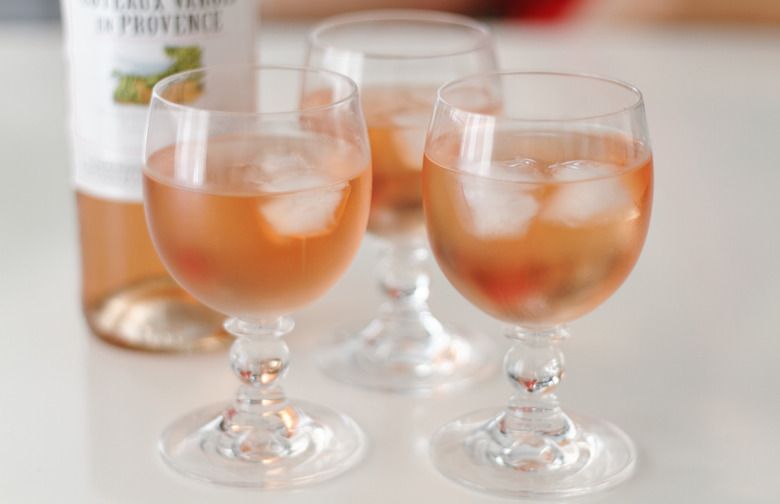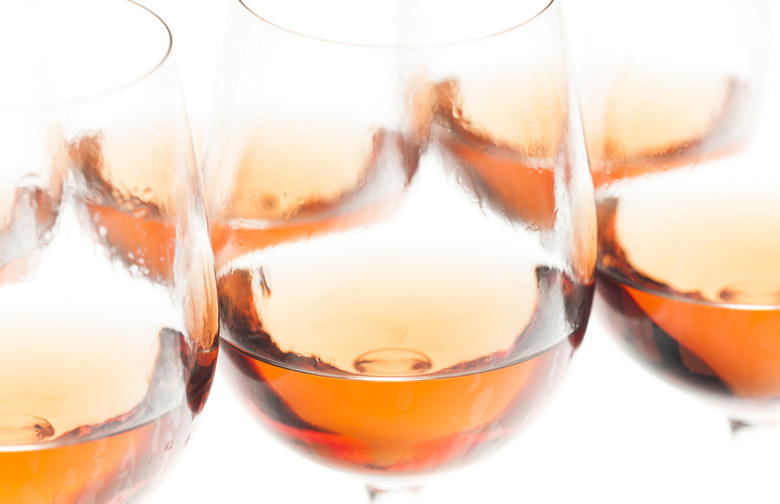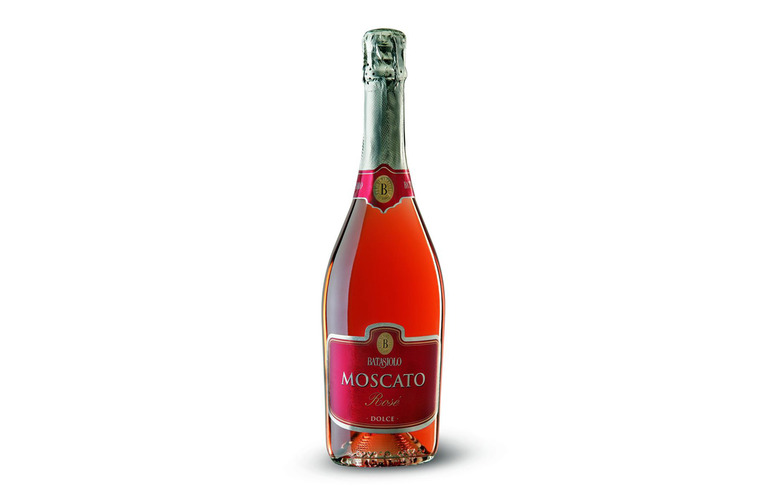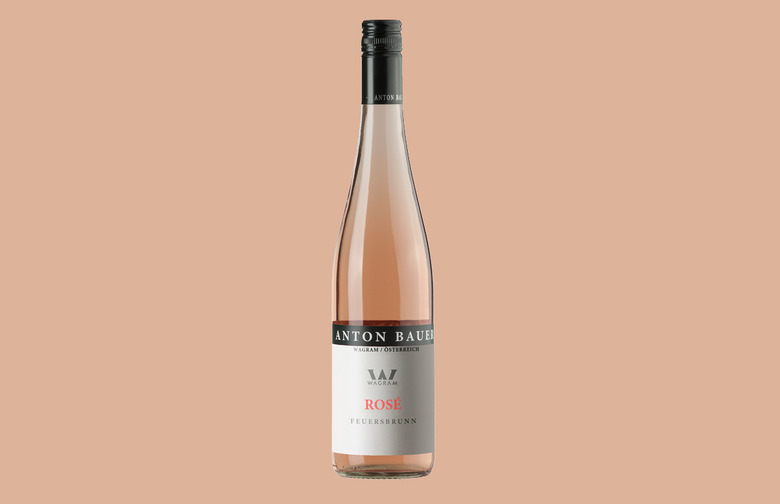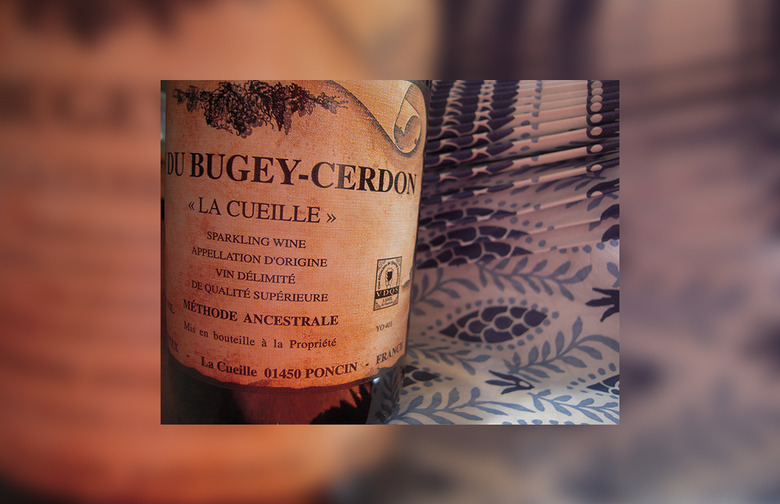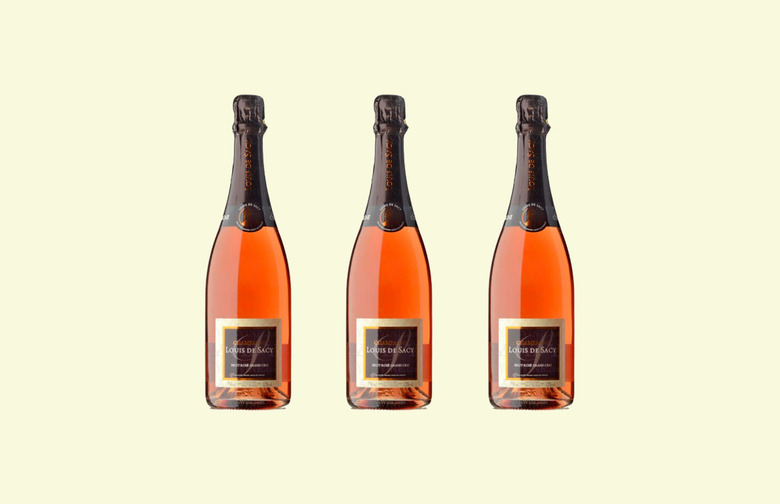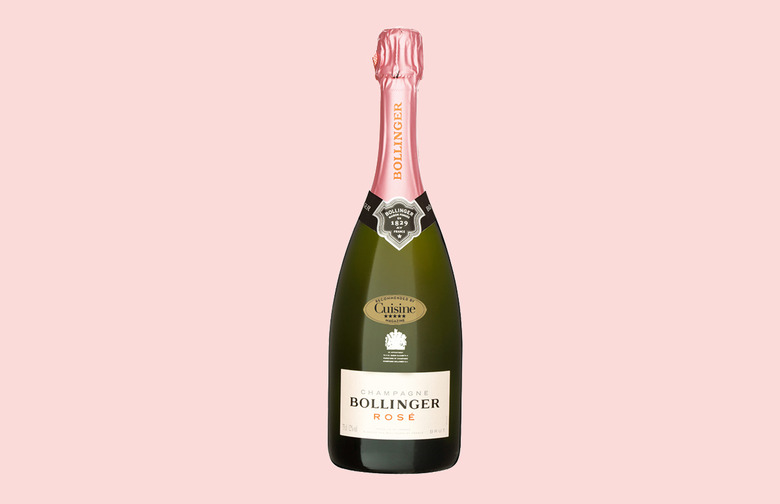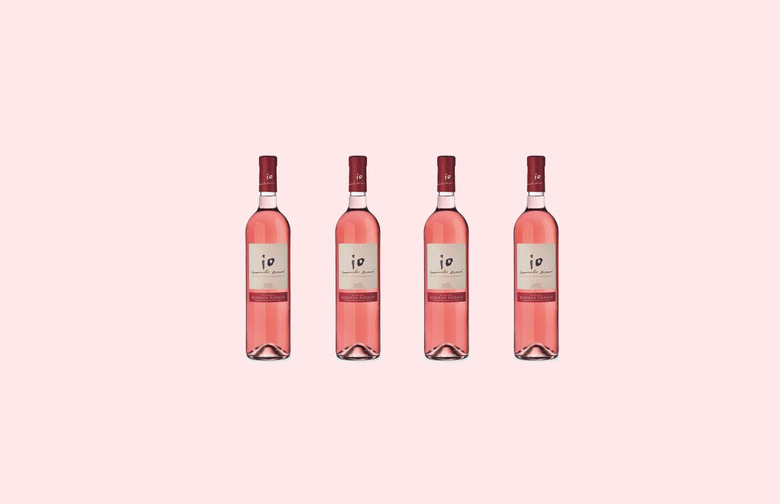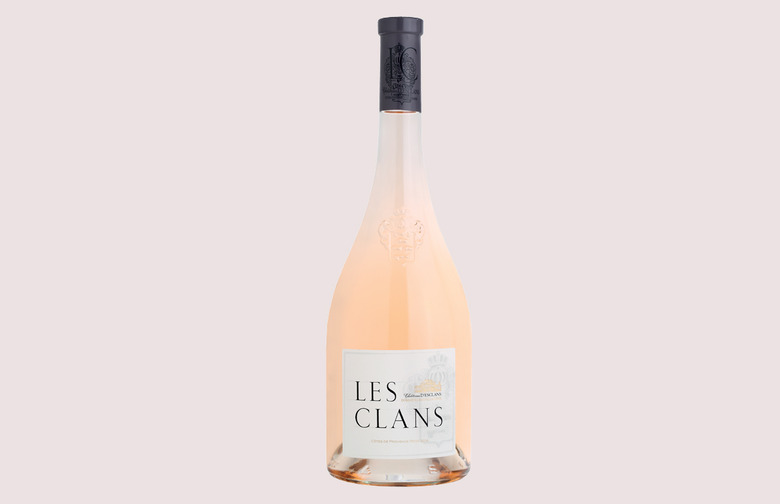Think Pink: Pretend It's Summer By Drinking These 9 Rosés
Lily Bollinger, of Maison Bollinger, once famously said, "I drink Champagne when I'm happy and when I'm sad. Sometimes I drink it when I'm alone. When I have company I consider it obligatory. I trifle with it if I'm not hungry and drink it when I am. Otherwise, I never touch it — unless I'm thirsty."
We feel the same way about Champagne and are thrilled that Americans now also beginning to feel this way about rosé. We want to show you that rosé is not just for summer, it's a versatile, food-friendly wine you can enjoy year round. One thing it is not is the sweet, insipid white zinfandel plonk your granny drinks because she can't handle real wine. Take a cue from the Europeans. They drink rosé by the gallon and have been doing so for a long time; now it's our duty as wine lovers to get some skin in the game and catch up.
For most lovers of rosé, including winemakers and wine writers, the rosés produced in France have always been the benchmark by which all of others are measured. The French have been making rosé for centuries and virtually every wine region produces at least one or more. While there are a few off-dry, and semi-sweet styles, most rosés are loved for their dry palate, aromatic nose, lower alcohol levels, and bracing acidity — all of which make them a natural when you want a wine that can pair with a wide range of foods. In the wine trade, we call them reds masquerading as a white.
Read Making the Case for Rosé to get the skinny on how rosé is made, the grapes used, what regions to look for, and Five Fab Rosés for Summer Sipping for additional wine recommendations.
There’s a Style for Every Palate
Whether your taste runs to mouth-puckering dry wines, off-dry, sparkling, semi-sweet, or dessert wines, there are rosés that will suit your taste. We have a few suggestions, both sparkling and still, that are fun to drink at Christmastime (try the Bugey, traditionally served at Christmas in the Savoie), will stoke the flames of romance on Valentine's Day, and are thirst-quenching in the heat of summer.
Batasiolo Moscato Spumante Rosé Dolce NV ($20)
Effervescent and sweet with titillating scents of rose hip and ripe fruit, this is a wine that's a party in the glass for those who enjoy something sweet. This moscato is estate produced by the Dogliani brothers on 15 hectares in the Boscareto vineyard right in the heart of Barolo country in Piedmont. The brothers are obsessed with quality and it shows in this moscato, which is a blend of moscato bianco and most likely aromatic red grapes like dolcetto and barbera. Its pale pink color and tickly nose are married with a velvety palate that's cherry all the way with hints of honeysuckle and rose petals. Whether it's served at the beginning of the meal or at the end, this wine is easily paired with soft creamy, pungent goat cheese, dried fruits, and light, fruit tarts.
Anton Bauer “Vintage” Rosé Brut 2014 ($24)
Austria might not be a region most wine consumers look to for red and rosé wines, but if you don't try them you won't know what you are missing. As pretty as a pink rose in bloom and just as sweet on the nose, you won't find any overly sweet wine here, just dry, crisp, smooth bubbly with hints of almonds, rose petal and cherry. Anton Bauer is a winery with an exalted pedigree and a modern approach to winemaking, and the Wagram area is just the place to make a complex sekt (German for bubbly) that doesn't take itself too seriously. A blend of 85 percent Blauburgunder, what we call pinot noir, and 15 percent Zweigelt, a native Austrian red grape, this wine is another value wine that will stump a few wine snobs but will make them converts once they taste it. For the rest of us, it's just tasty, tempting, and pink and we like it because it has notes of ripe cherry, plum, and toasted bread with plenty of acidity to make it easy to drink as a cocktail or with a range of appetizers.
Patrick Bottex Vin du Bugey-Cerdon "La Cueille" Rosé NV ($29)
This rare wine from an unknown region is exactly the kind of hidden gem that drives wine geeks mad with desire and thrills normal folks with its exuberance. A blend of 90 percent gamay and 10 percent poulsard, Cerdon is one of three village sub-appellations in Bugey, until recently a secret known only to the French. The tiny village of Cerdon, famous for having been a hideout for the anti-Nazi Maquis during World War II and for its copper pot factory, is mountainous, with tiny vineyard plots scattered among rocky bluffs and steep ravines. While Bugey is technically in the Savoie, it sits at the junction of Savoie, the Jura, Burgundy, and the Rhône. Patrick and Catherine Bottex consistently produce this wine as a bright, fruity, off-dry alternative to Champagne with less fizz. Aromatic and lively, notes of ripe grapes, strawberry, and sweet cherry are repeated on the palate, making this a pleasure to drink and the perfect wine for creamy, fatty cheese, light seafood, cold cuts, or just because.
Louis de Sacy Grand Cru Brut Rosé NV ($42)
In Champagne, there only 17 grand cru villages, including Verzy, and thirteen generations of the de Sacy family have been making wine near Verzy since 1633. This wine comes from 50 year old vines in the Les Buissons vineyard plot in the Montagne de Reims area on the cusp of the village of Verzy. This grand cru is one of our favorites because it's a blend of 90 percent pinot noir and 10 percent pinot meunier and is just so wonderfully delicious to drink. To achieve such a stellar rosé, the grapes are macerated on the skins to produce a pale pink ruby color that is as pretty as a pink ballerina slipper. This is definitely a vin de plaisir, either sipped alone or served with an elegant meal. Swirling the glass reveals tendrils of earthy wild fraise de bois and rich cherry and raspberry aromas. But it's the mouthfeel that will win you over. The wine has a sensuous body with tons of curvy red currant and Morello fruit, earthy yeast, and steely acidity. The long finish makes it irresistible and we suggest you buy two bottles; you will want them. This wine is a steal for the price.
Bollinger Brut Rosé NV ($70)
Those who know Champagne and adore pinot noir know Bollinger; they're pinot noir specialists. Pinot noir Champagnes are renowned for their dark cherry aromatics, deeply complex flavors, and long finish worthy of inclusion in any list of great wines. With a blend of 62 percent pinot noir, 14 percent pinot meunier, and 24 percent chardonnay, this pretty pink wine gets its color from the addition of red wine rather than the saignée method (giving the juice some contact with the red grape skins) and thus preserves the red berry aromas and discreet flavors. Morello cherry and tart raspberry are complemented by toasty brioche and subtle hints of mushrooms. Verve of acidity gives the wine backbone and chalky minerality creates a balanced, full-bodied Champagne that fans of Bollinger's Special Cuvée will recognize immediately.
Albino Armani Io Domenico Schiava Rosato NV ($13)
Fans of light, fruity but crisp, front porch wines with lots of aromatics, have we got a wine for you. Red, white, and pink wines from the alpine region of Alto Adige in Trentino, Italy are some of the best made, value priced wines you can find. We adore them for their consistent superior quality, which is why we want you try this Schiava. The grapr is famous for cotton candy and strawberry scents, don't let schiava's sweet nose fool you, it has plenty of acidity and is a wonderful wine to include when you are preparing dinner. While it most often comes in a red version, this rosé has as much finesse as the reds and displays playful notes of yes, cotton candy and strawberry, but also rose petals, Hubba Bubba® bubblegum, kumquat, and hints of classic limestone and volcanic minerality. It may not be complicated but you will enjoy it immensely.
Château d'Esclans Les Clans Rosé Côtes de Provence 2013 ($65)
Though rosé is often viewed as a fleeting pleasure incapable of aging, there are those that can age beautifully and Château d'Esclans ranks among the most highly regarded rosé producers in this category. Their Les Clans and Garrus, two of the winery's high-end offerings, are suitable for drinking and serving with a fine meal any time of year.
Les Clans, one of the estate's prestige offerings, has the classic pale salmon color you expect in a fine Provençal rosé. Don't let the pale color fool you; this is a wine for thinkers and gourmands. A blend of old vine grenache and rolle, this wine is classic grenache-style pink wine. For a taste of the south of France, close your eyes and you will smell loads of freshly picked strawberry, ripe fennel, hints of freshly zested ginger, and fraise de bois. The full body and crisp acidity are matched by dark cherry, raspberry, and a long finish. There are few rosés that exhibit this much style.
